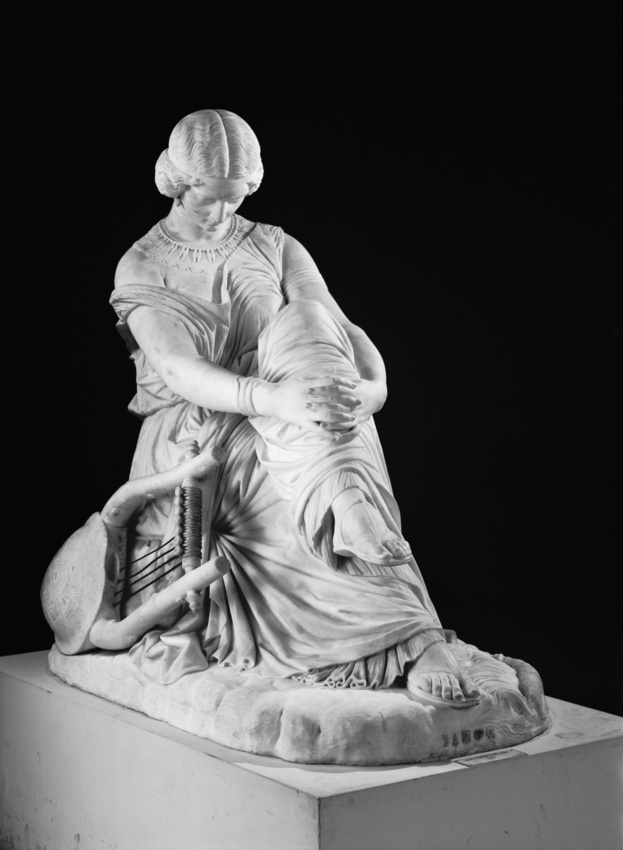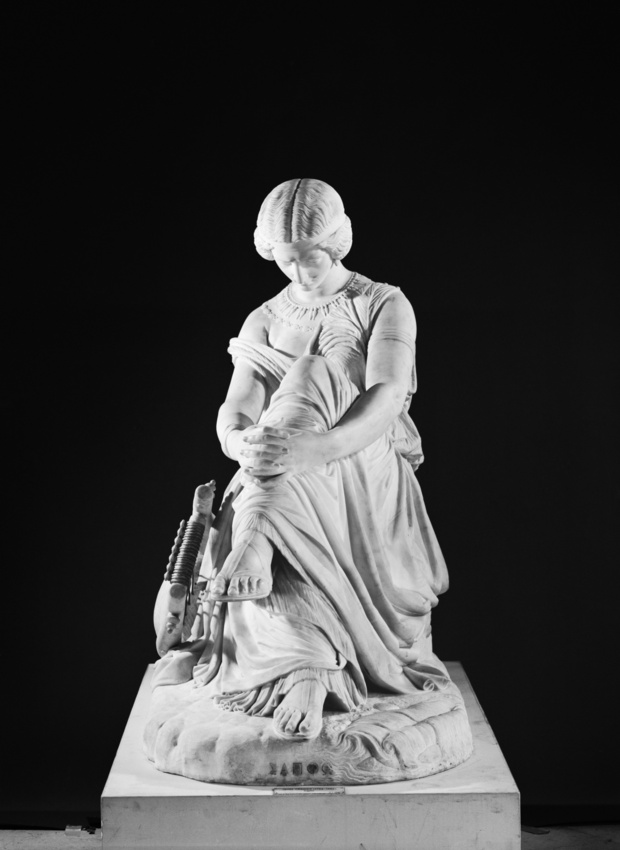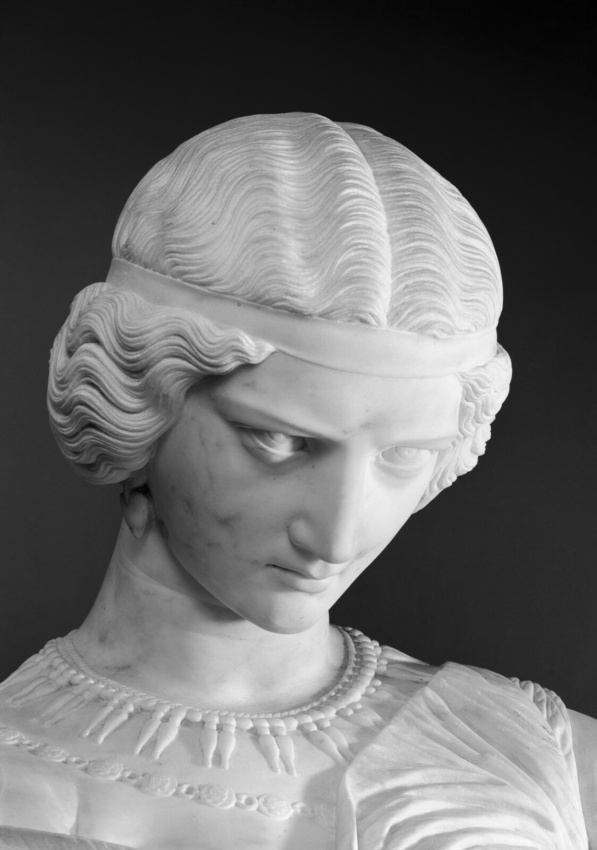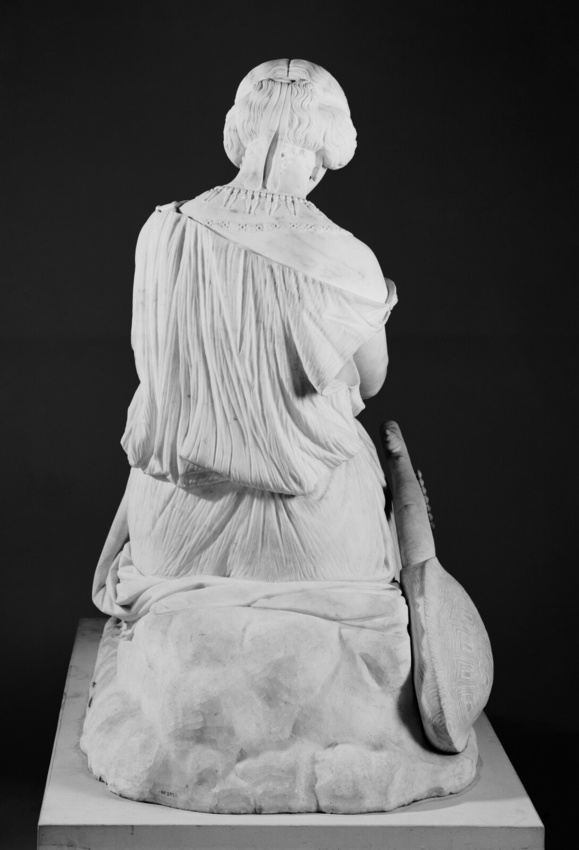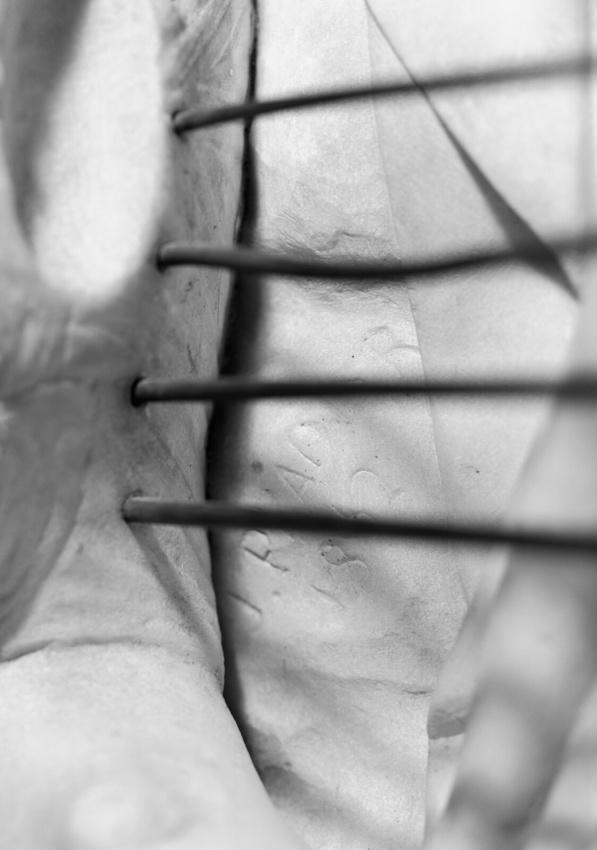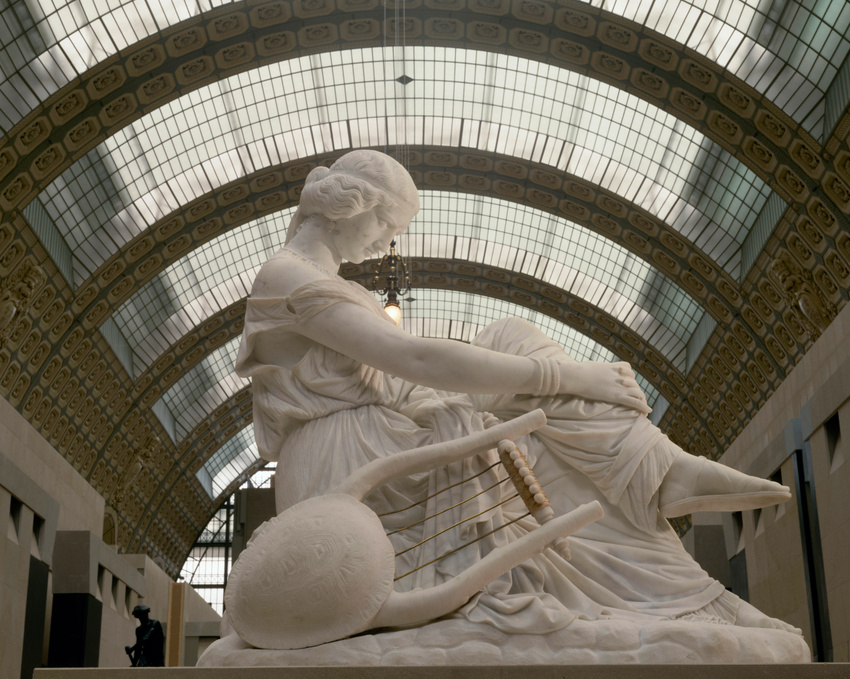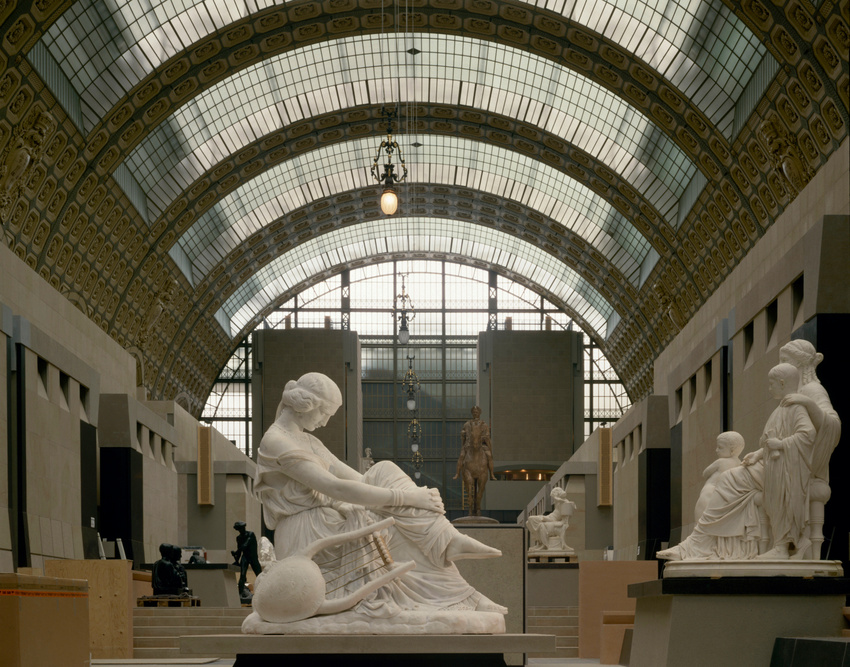Sapho
Well-known and appreciated from 1820, Pradier received commissions from all the regimes: the Restoration and the July Monarchy asked him to produce major works, in particular for the House of Deputies in 1830, for the Place de la Concorde in 1836 and the pediment of the Luxembourg Palace in 1840. The female figure was the central theme in his work.
However his style cannot be reduced to the introduction of pleasant sensuality into an antique repertoire; the painfully restrained, palpitating drama of Sappho (1852) makes that clear. Certainly the figure combines the nobility of marble and the dignity of the subject but the clarity of the construction, the wildness of the gesture, the meditative intensity of expression suddenly give it a presence and intense interiority: the antique poetess Sappho, in despair, is thinking of suicide.
Everything conspires to show that Pradier was an ambiguous artist with many different talents: recognised by the Academy at an early age, he nevertheless explored the paths of romanticism drawn from literature, as here. He was close to Victor Hugo, who publicly took his defence on several occasions.
Sappho was on display at the Salon in 1852 when the sculptor died suddenly; she was then covered with a black veil and the artist was posthumously awarded the medal of honour.
